“The name conjures up visions of breath-taking exploits of the racing cars and drivers of international fame, but also of superlative comfort and coachwork of exquisite beauty, fine paintwork, brightly polished metal, the finest hardwood and leather – massive and yet outstandingly attractive bodies – in short:- the car for the connoisseur” For once, Daimler-Benz can rightly be accused of understating the 500K and the 540K in their publicity material. There is no question at all that the 500K is and was one of the world’s greatest supercars, comparable in its day with such other greats as the Bugatti Type 57S from France, the mighty Duesenberg SSJ from America, the supremely elegant short chassis Lagonda V12 from Great Britain and Italy’s high performance Alfa Romeo 2.9. The 500K was created against a backdrop of Germany re-establishing its industrial might between the wars and with strong Government backing supporting all levels of industry to ensure that German manufacturers would sit once again at the pinnacle of the world-wide manufacturing industry. The mighty German steel industry had regrouped and was a world leader, Bosch was at the forefront of the electrical manufacturing companies world-wide and Mercedes-Benz, focused and co-ordinated in true Teutonic style, had re-established their position right at the forefront of the world’s motor manufacturers. Mercedes-Benz also dominated the European motor racing scene during the 1930’s. Rudolf Caracciola drove the Mercedes-Benz 5.6 litre Silver Arrow W125 racing car to victory in the European Championship in 1937 and for the 1938 to 1940 seasons the supercharged 3 litre Mercedes-Benz cars were all-conquering on the European racing circuits. The W154, with its 12 cylinder engine developing 460 bhp, took Caracciola and Lang to victory after victory and the 1.5 litre W165 surprised all on its one and only outing, with Herman Lang driving to a remarkable first place in the 1939 Tripoli Grand Prix. The world-wide exposure gained by its hugely successful racing exploits could not be wasted and buyers looked to Mercedes-Benz for road cars with the superlative qualities of their racing models. The flagship 500K did not fall short. Built of only the finest materials, the new eight cylinder cars which had first been announced in 3.8 litre form in 1933 as the 380, were a major success right from the start. There is no doubt that they were built to assume the mantle formerly worn by the supercharged S Series cars from the design board of Ferdinand Porsche but here was a new generation of car, the inspiration of design genius, Hans Nibel. It was an inevitable step in the march of progress to increase the engine size to 5 litres after less than 200 examples of the 380 had been built. The new 500K supercharged engine developed an unstressed 160bhp and was to power a stylish range of cabriolet, roadster and saloon models. Mercedes-Benz coachwork was created by a relatively anonymous in-house design studio, each feature of the coachwork being almost architecturally created, carefully measured for design stress, passenger comfort and practicality and yet the finished design products were surely the most striking of all European designs, blending Teutonic appearance with a superb styling instinct. It was no surprise therefore that the 500K and 540K models found instant popularity with the Nazi hierarchy, with Goering, Goebbels and Ley favouring these models for their personal transport. Of course Adolf Huhnlein, the NSKK Korpsfuhrer who was at the forefront of motor sport organisation in Germany, would regularly be seen at the wheel of the flagship model. The 500K and 540K cars were built exclusively and unashamedly for the rich and famous. The distant screaming of the mighty supercharged cars would draw onlookers to the roadside to watch them pass at high speed, perhaps catching a glimpse at the same time of a celebrity, an industrial magnate or indeed a high ranking military officer. This 50
“The name conjures up visions of breath-taking exploits of the racing cars and drivers of international fame, but also of superlative comfort and coachwork of exquisite beauty, fine paintwork, brightly polished metal, the finest hardwood and leather – massive and yet outstandingly attractive bodies – in short:- the car for the connoisseur” For once, Daimler-Benz can rightly be accused of understating the 500K and the 540K in their publicity material. There is no question at all that the 500K is and was one of the world’s greatest supercars, comparable in its day with such other greats as the Bugatti Type 57S from France, the mighty Duesenberg SSJ from America, the supremely elegant short chassis Lagonda V12 from Great Britain and Italy’s high performance Alfa Romeo 2.9. The 500K was created against a backdrop of Germany re-establishing its industrial might between the wars and with strong Government backing supporting all levels of industry to ensure that German manufacturers would sit once again at the pinnacle of the world-wide manufacturing industry. The mighty German steel industry had regrouped and was a world leader, Bosch was at the forefront of the electrical manufacturing companies world-wide and Mercedes-Benz, focused and co-ordinated in true Teutonic style, had re-established their position right at the forefront of the world’s motor manufacturers. Mercedes-Benz also dominated the European motor racing scene during the 1930’s. Rudolf Caracciola drove the Mercedes-Benz 5.6 litre Silver Arrow W125 racing car to victory in the European Championship in 1937 and for the 1938 to 1940 seasons the supercharged 3 litre Mercedes-Benz cars were all-conquering on the European racing circuits. The W154, with its 12 cylinder engine developing 460 bhp, took Caracciola and Lang to victory after victory and the 1.5 litre W165 surprised all on its one and only outing, with Herman Lang driving to a remarkable first place in the 1939 Tripoli Grand Prix. The world-wide exposure gained by its hugely successful racing exploits could not be wasted and buyers looked to Mercedes-Benz for road cars with the superlative qualities of their racing models. The flagship 500K did not fall short. Built of only the finest materials, the new eight cylinder cars which had first been announced in 3.8 litre form in 1933 as the 380, were a major success right from the start. There is no doubt that they were built to assume the mantle formerly worn by the supercharged S Series cars from the design board of Ferdinand Porsche but here was a new generation of car, the inspiration of design genius, Hans Nibel. It was an inevitable step in the march of progress to increase the engine size to 5 litres after less than 200 examples of the 380 had been built. The new 500K supercharged engine developed an unstressed 160bhp and was to power a stylish range of cabriolet, roadster and saloon models. Mercedes-Benz coachwork was created by a relatively anonymous in-house design studio, each feature of the coachwork being almost architecturally created, carefully measured for design stress, passenger comfort and practicality and yet the finished design products were surely the most striking of all European designs, blending Teutonic appearance with a superb styling instinct. It was no surprise therefore that the 500K and 540K models found instant popularity with the Nazi hierarchy, with Goering, Goebbels and Ley favouring these models for their personal transport. Of course Adolf Huhnlein, the NSKK Korpsfuhrer who was at the forefront of motor sport organisation in Germany, would regularly be seen at the wheel of the flagship model. The 500K and 540K cars were built exclusively and unashamedly for the rich and famous. The distant screaming of the mighty supercharged cars would draw onlookers to the roadside to watch them pass at high speed, perhaps catching a glimpse at the same time of a celebrity, an industrial magnate or indeed a high ranking military officer. This 50
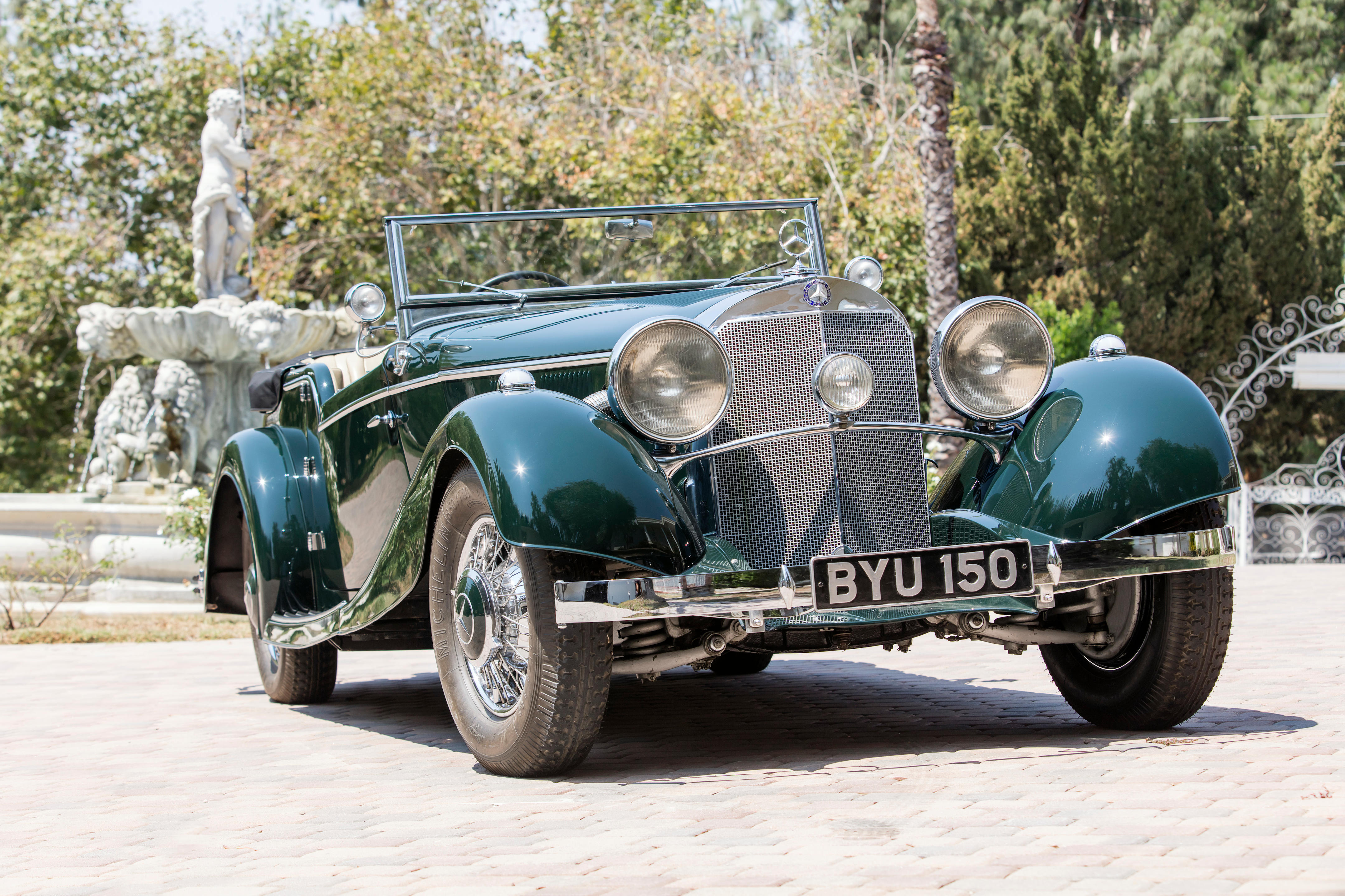
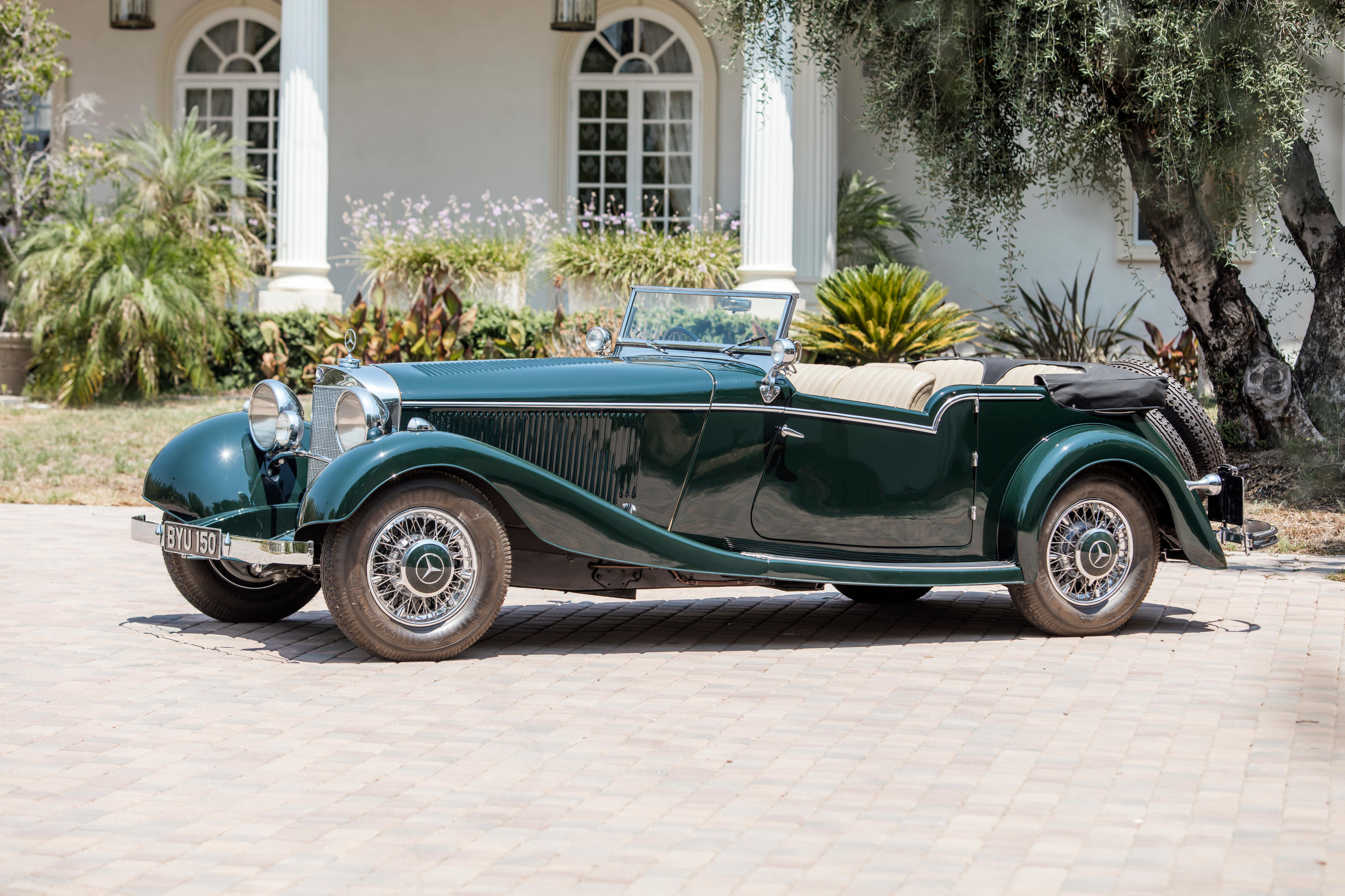
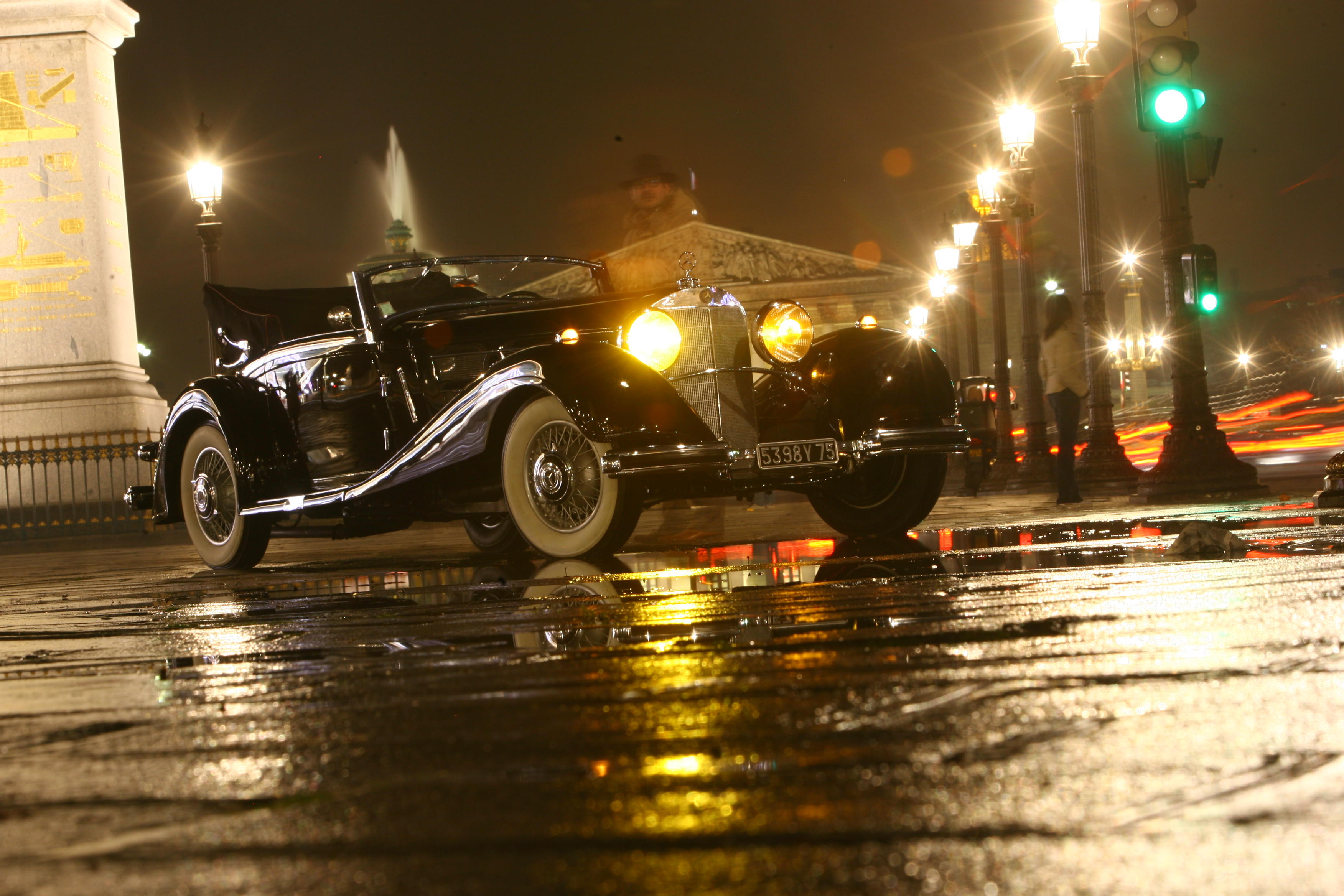
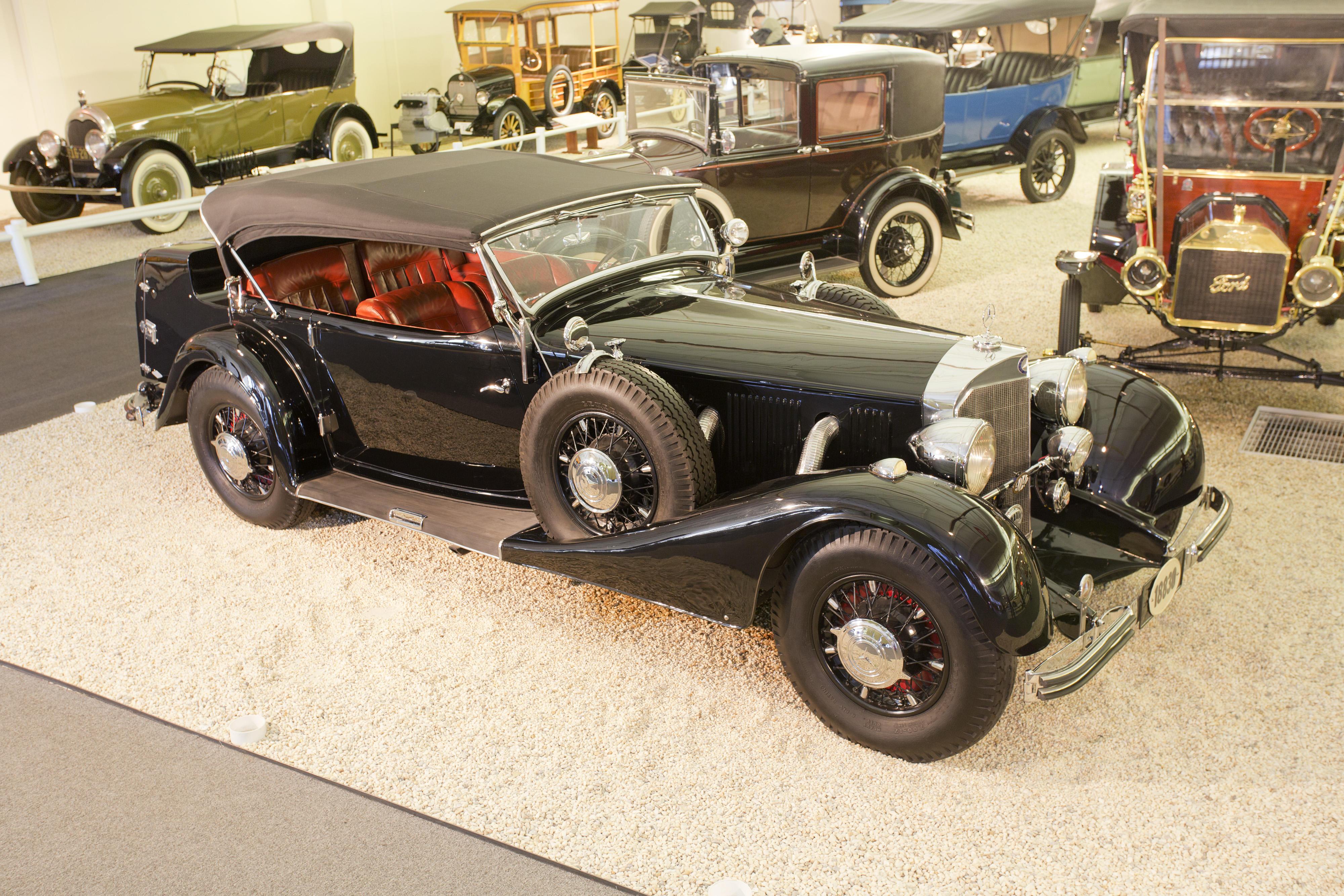
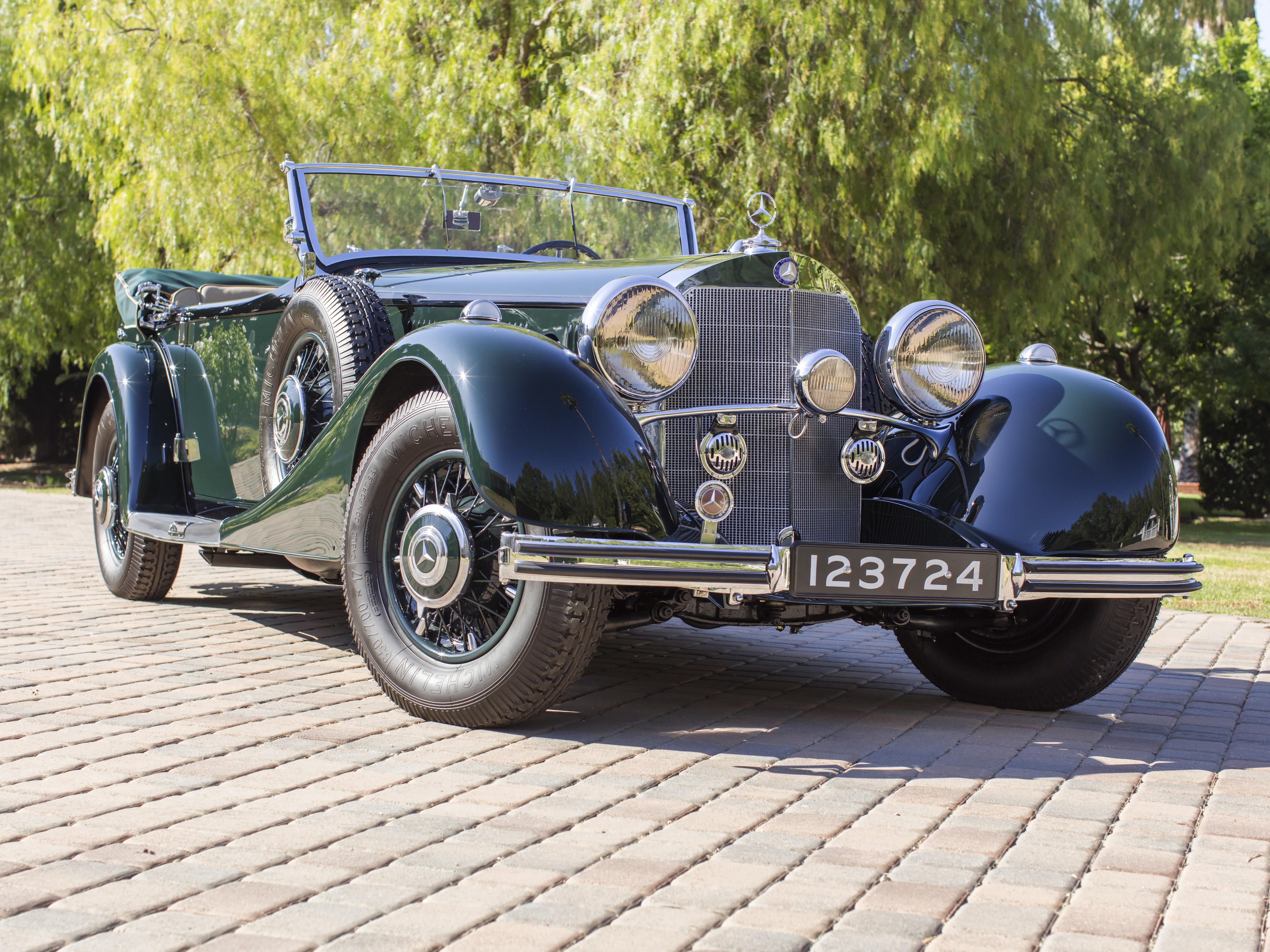





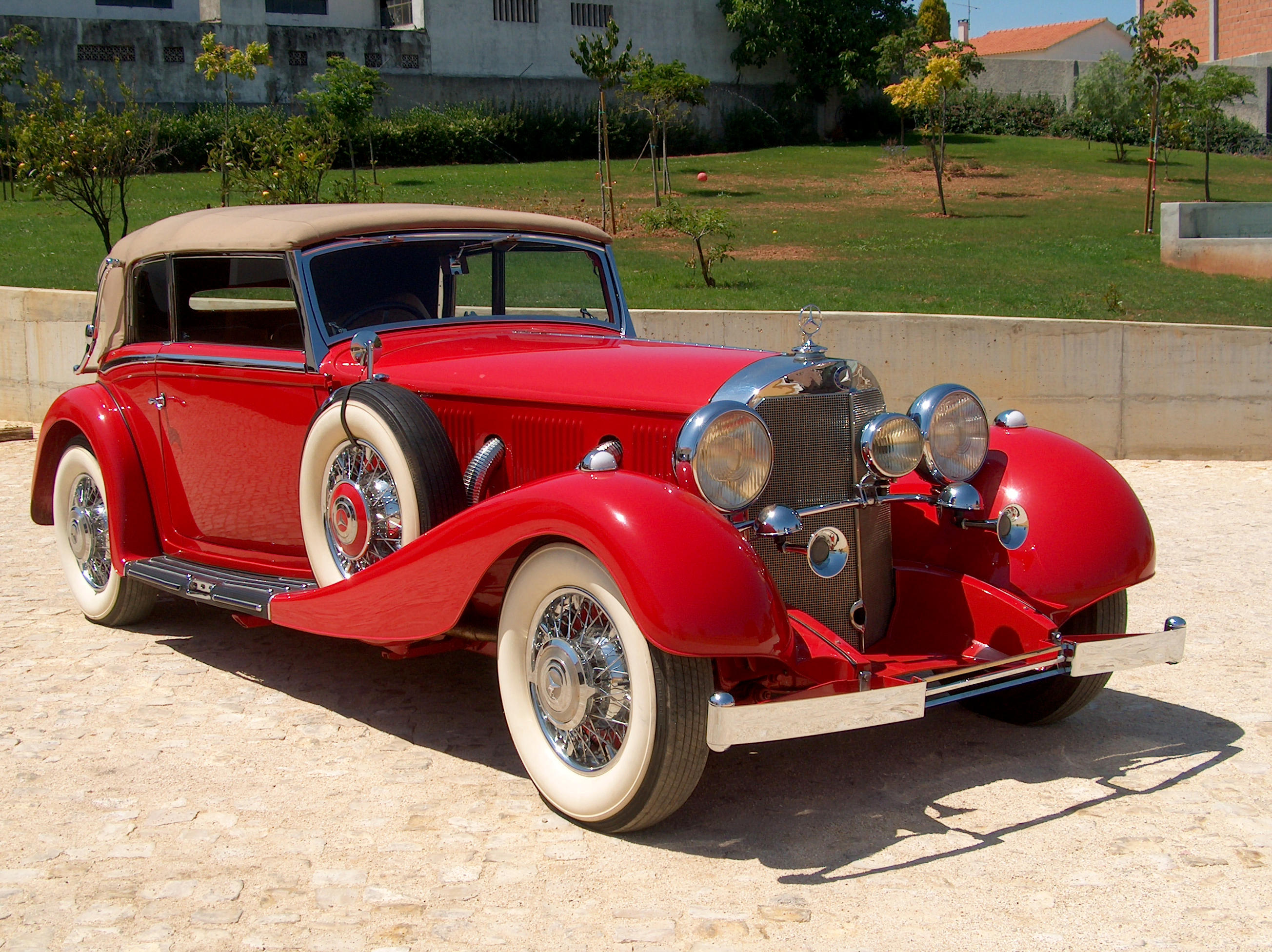
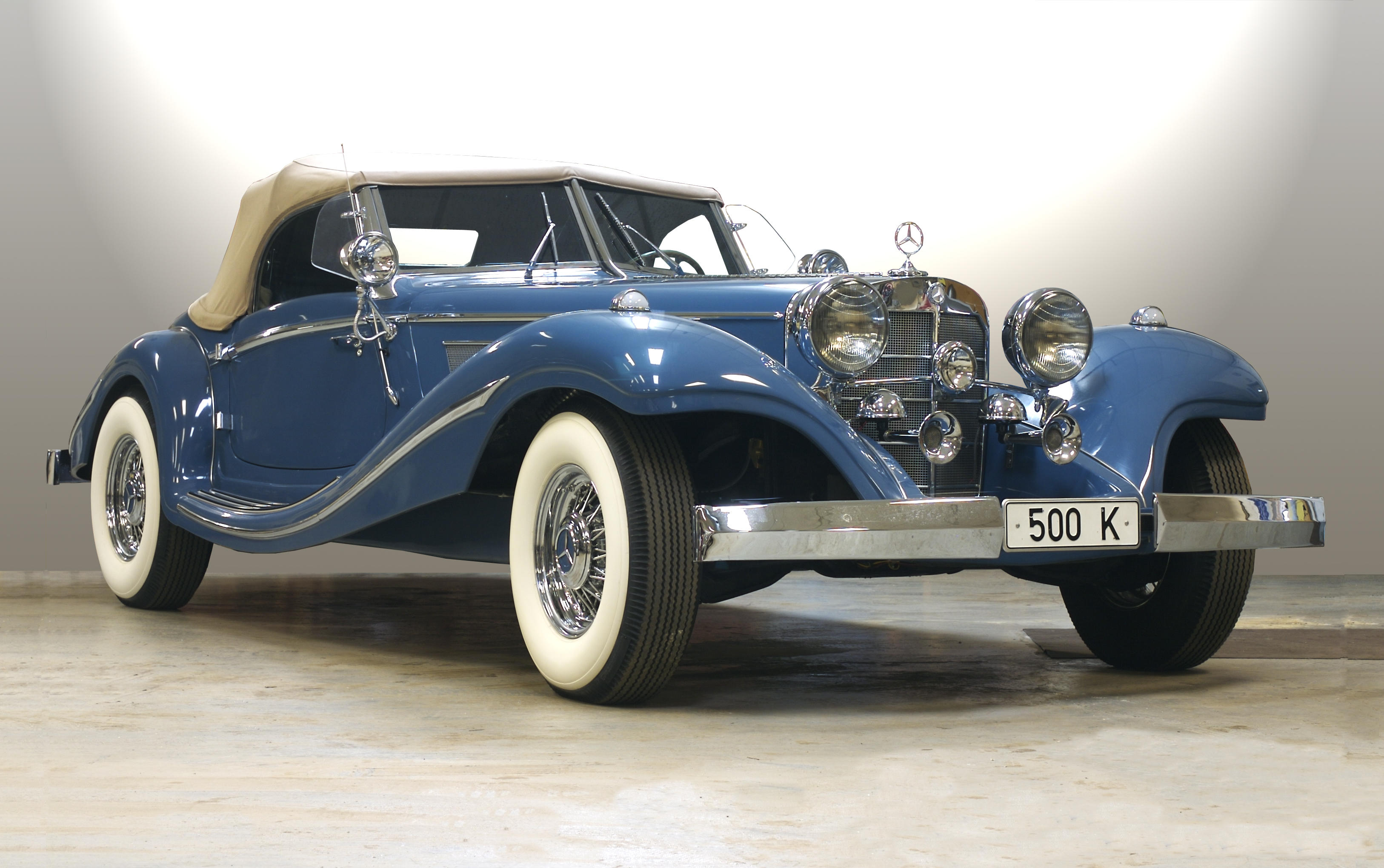
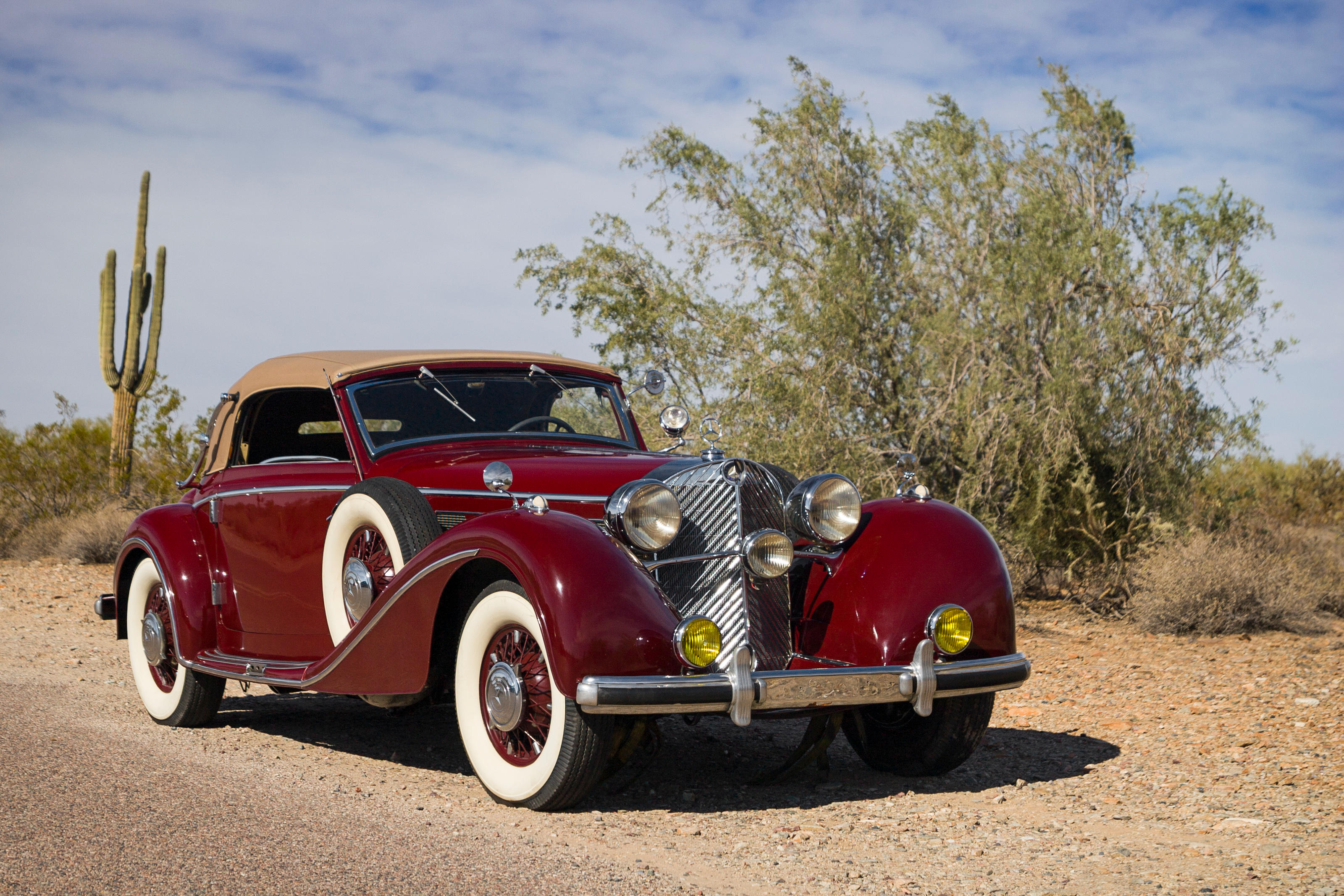
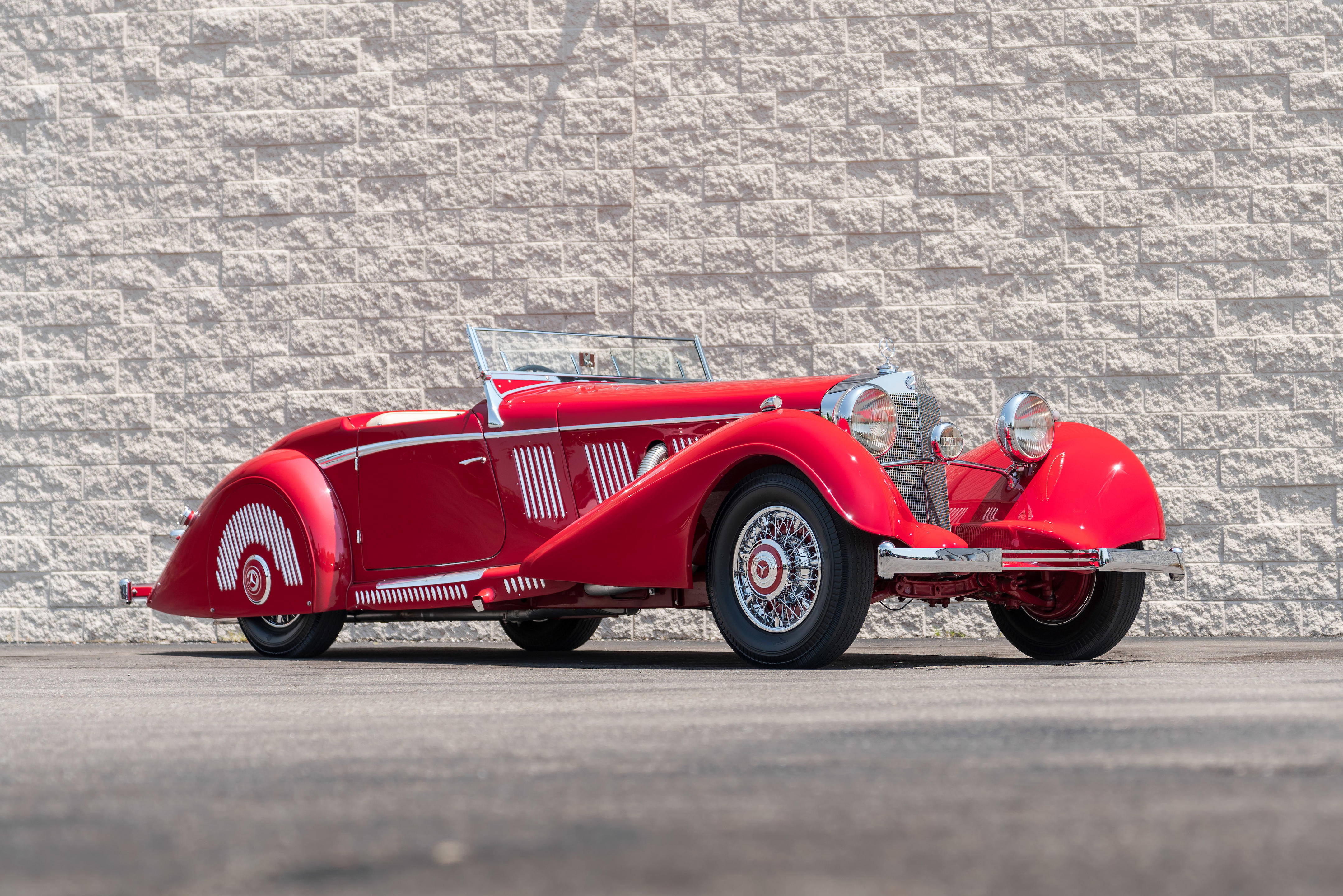
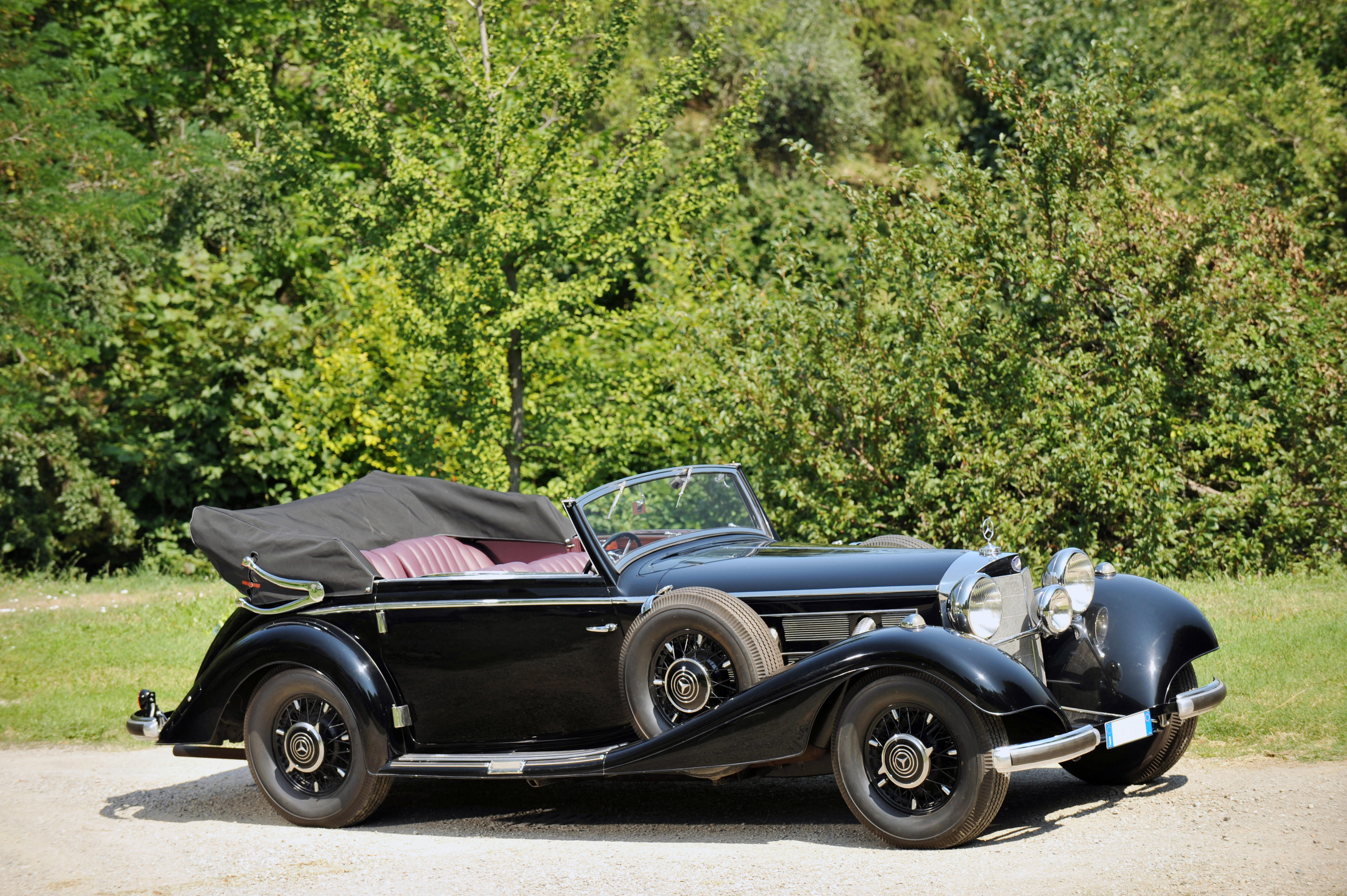
Try LotSearch and its premium features for 7 days - without any costs!
Be notified automatically about new items in upcoming auctions.
Create an alert